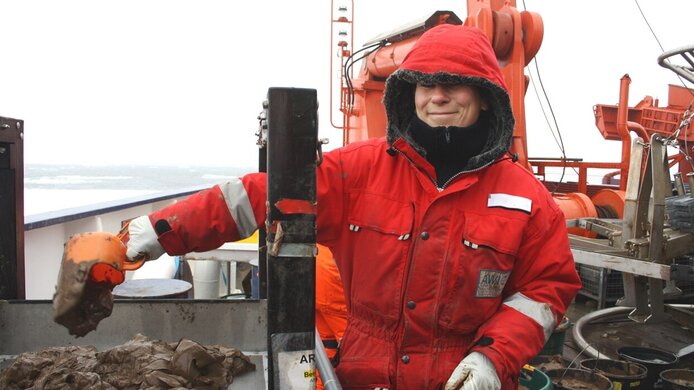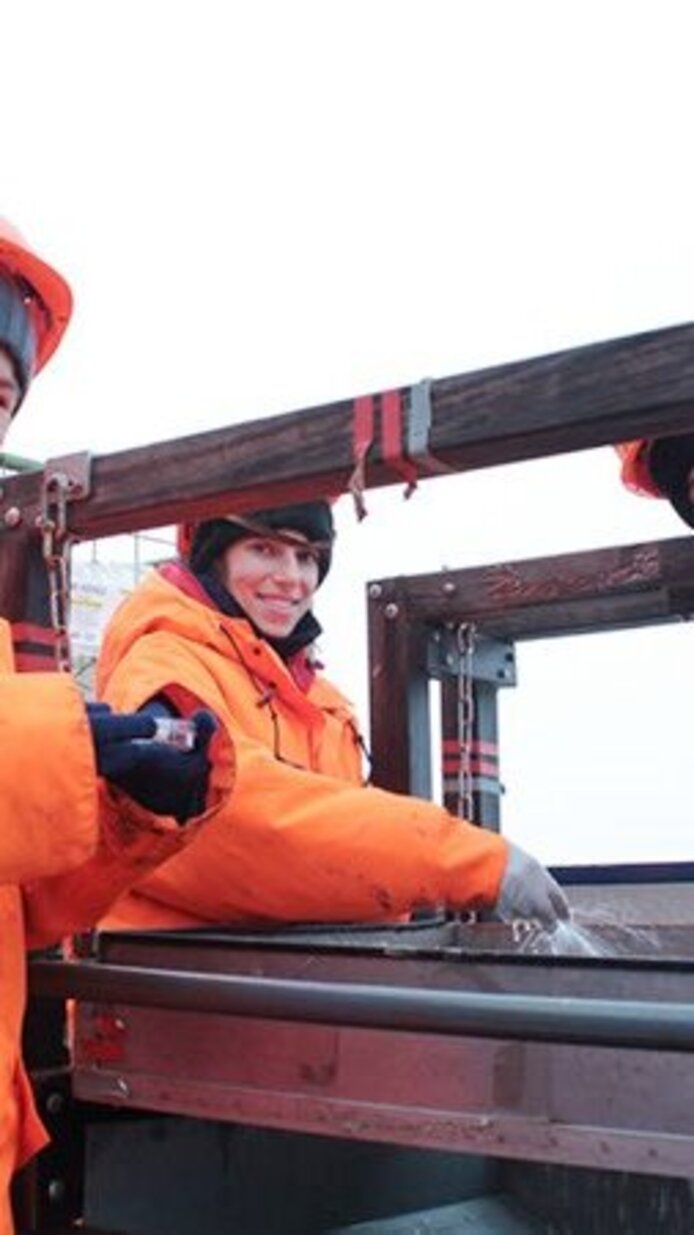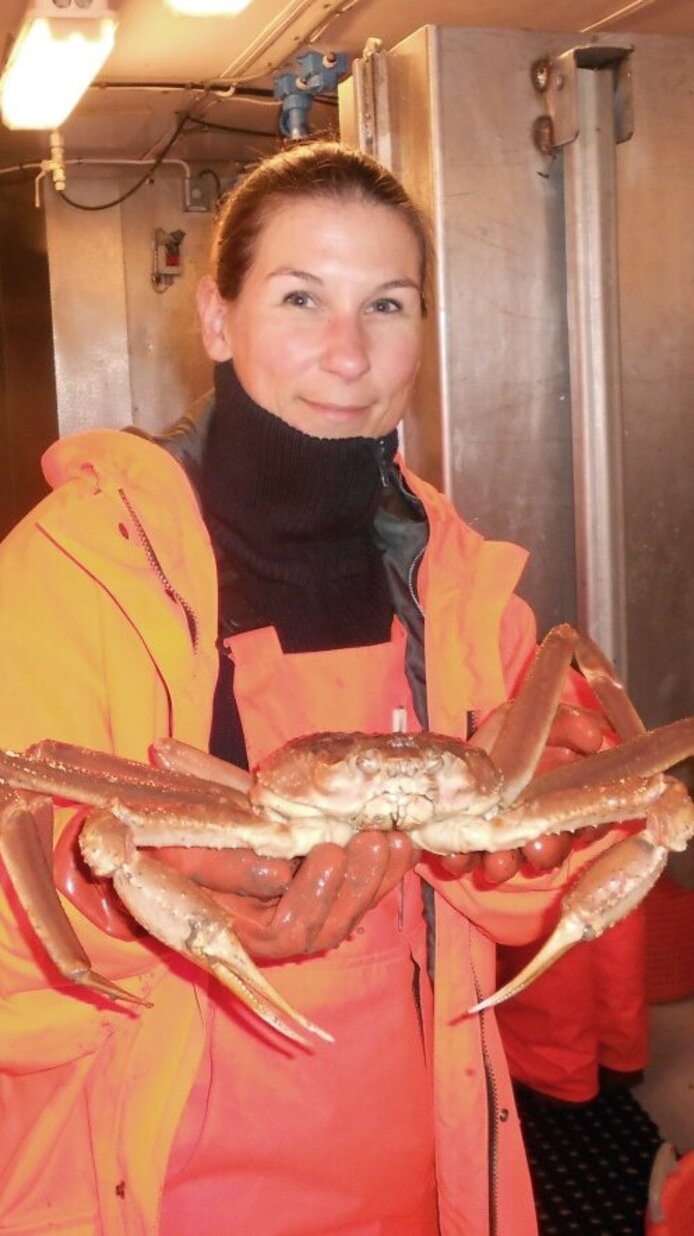A new look at life in the Arctic Ocean

The Arctic is one of the Earth‘s most fascinating and least well researched habitats. Its sheer size and the harsh climate make it difficult to gain an exact understanding of its ecosystem. Understanding it better would, however, be desirable: the Arctic is of great relevance for the climate of our planet and for the fishing industry, particularly since the melting of the ice cap has been transforming this habitat at a rapid pace. A method called biological trait analysis (BTA) can provide a more precise understanding of the animals living in and on the Arctic sea floor. By involving not only the collection and classification of species, but also a modelling of their functions in the ecosystem, BTA provides a deeper insight into the interdependencies of this habitat. Within the context of a Hertha-Firnberg grant funded by the Austrian Science Fund FWF, the biologist Renate Degen from the University of Vienna is making use of this analytical method to provide a first detailed impression of the Arctic sea floor ecosystem. “The method was developed for freshwater systems and terrestrial ecology. In a marine context it is relatively new, and this is the first time it’s being used in a polar region”, explains Renate Degen in the interview with scilog. The traits being studied are measurable properties of an organism: “It’s about finding out what the organisms do with their habitat and how they interact with other organisms and the inanimate environment. It involves, for instance, how animals move, whether they burrow in the sediment or move on top of it, what they feed on and whether they are predators or filter their food from the water”, says Degen. These data are then analysed by means of mathematical methods. “You capture a functional spectrum which you can convert into numbers in order to analyse it.”
That undertaking is clearly more difficult in the Arctic than on land, where this method is usually applied. “Most publications of terrestrial ecology using the method tend to focus on grassland. There you find organisms that can't run away.” For Arctic waters there are a number of approaches: “One possibility is dragging nets across the sea floor. This works for organisms that live on the surface of the sediment, but tends to miss out on those that live below the surface. For the latter you additionally employ grippers that dig into the sediment”, relates Degen. The third element involves photographs and video recordings. “By analysing all these sets of data we get a comprehensive idea of the entire ecosystem and not just a small section.”
International co-operation
For this project, Renate Degen, herself a participant in various expeditions in Arctic waters, focuses on collecting available data. “This comprehensive approach is possible only because I am in the happy position of being given access to existing data, some of which have already been published, by international collaborators”, explains the biologist. “Meanwhile it has grown into a very large collaboration, and I receive a lot of interest from others who would like to contribute to the project.” For the moment, research groups from Norway, Poland, Germany and the US have made their results available. The unique feature of the Arctic ecosystem is the annual growth and melting of the ice cap. “Darkness reigns for half a year, which means there is no photosynthesis and all life processes are reduced to a minimum. In spring, when the ice starts to melt and the sun is back, there is a huge plankton bloom, comparable to a harvest festival, but only if there are enough nutrients. In this respect, the benthic organisms, i.e. those living in and on the sea floor, are very important because they contribute to recycling the nutrients.” The different densities of melt water and saltwater also promote better mixing. The shrinking of the ice due to climate change has a massive impact on these interactions. According to Degen, there are already clearly visible changes in the Arctic.
Early warning system
“Whereas no species has disappeared completely yet, we already notice that the situation has changed. This is why the trait-method is so interesting. It acts as an early warning system. Frequently, the behaviour of organisms changes before a species disappears. The trait method helps you establish that fact.” In general, as research has demonstrated, all-rounders have better chances of survival. “Certain crabs have migrated in from the south, the snow crab for instance. This is a large type of crab that is also harvested by commercial fishing. I was in Spitzbergen in the summer. Until a few years ago these crabs were not found further north than northern Norway, and today you already see them in Spitzbergen”, reports Degen. Biological trait analysis now helps the researchers to get a more precise picture of these transformations in the Arctic.
Personal details Renate Degen is a biologist at the University of Vienna at the Department of Limnology and Bio-Oceanography, where she conducts her research with the help of a Hertha-Firnberg grant from the FWF. Her research interests are biological interdependencies of the sea floor, particularly in the Arctic.
Publications







